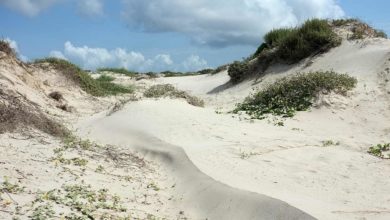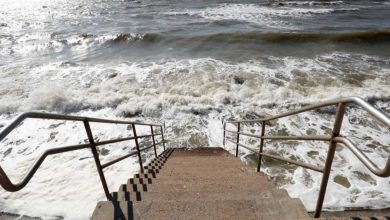Where do dunes come from?
Coastal dunes arise naturally as the wind blows sand across the beach and it slowly accumulates around grass and other vegetation. To understand why, let’s talk physics.
To get anything moving, you need to exert a greater force on it than the forces that are keeping it in place. For sand, two forces tend to make it stay put: gravity and the cohesion created by moisture between the grains. (That’s another way of saying that wet sand doesn’t blow.) When the wind gusts, it brings two opposing forces to bear. A lifting force arises from the flow of air over top of the grain, the same thing that causes an airplane’s wing to rise. In addition, the wind puts direct pressure on the windward side of the grain that tends to push it forward.
What happens next depends on the velocity of the wind and the size of the grain. Grains more than 0.3 mm in diameter tend to just roll along. Grains as small as 0.1 mm tend to saltate, tumbling ahead in hops, skips and jumps. Very fine grains may get blown aloft and carried a significant distance in the wind. Most sand moves by saltation. As the hopping grains land, they often strike their neighbors, pushing them along in somewhat of a chain reaction, something you can watch happen if you take an ant’s view of the scene.
Vegetation
The sand will keep going until something slows down the wind. On beaches, that’s usually vegetation, driftwood or wrack that collects behind the high tide line. When vegetation breaks the wind, it drops its load of sand. As the sand piles up, the steepening incline further slows the wind, which drops more sand, and so on. Over time, the vegetation gets thicker, and sand builds up into dunes that can run along the back of the beach for miles on end. Large dunes can take 20 years or more to develop.
Dunes in Galveston are spotty and less than 10 feet tall, but at the South Padre Island National Seashore long, imposing lines of dunes soar 25 feet or more.
REFERENCES
Pye, K. & Tsoar, H. (2009) Aeolian sand and sand dunes. Springer: Berlin.
Nordstrom, K.F., Norbert, P. & Carter, B., (Eds.) (1990). Coastal Dunes: Form and process. John Wiley & Sons: Chichester, England.





